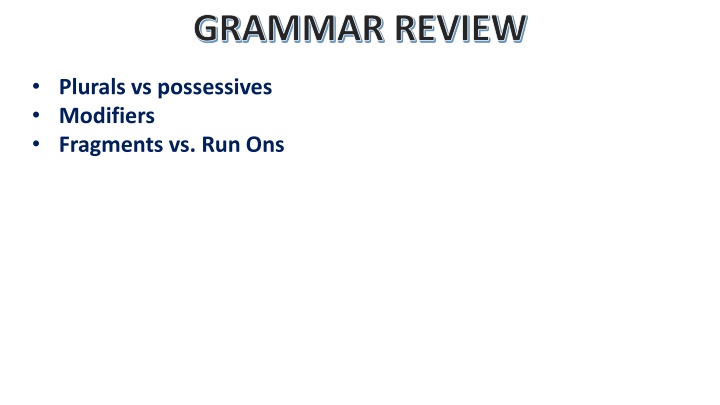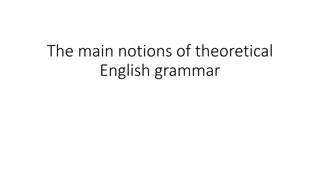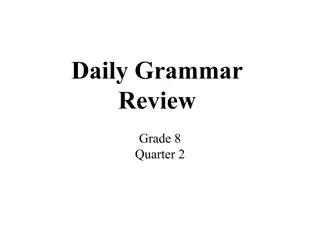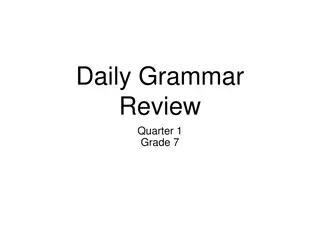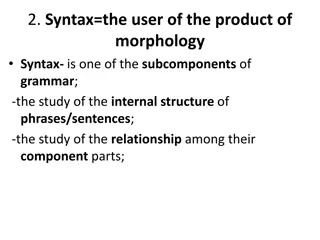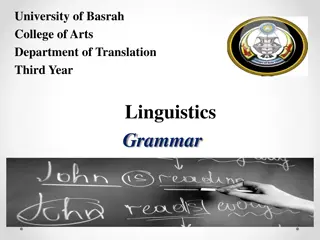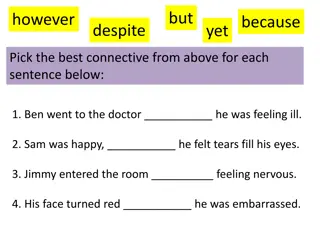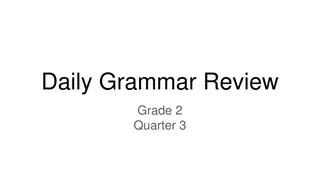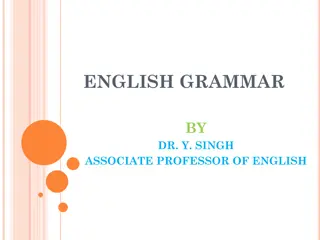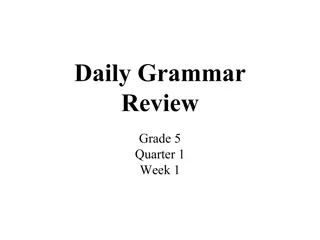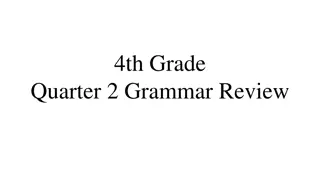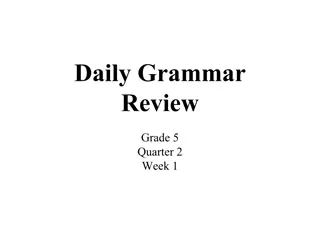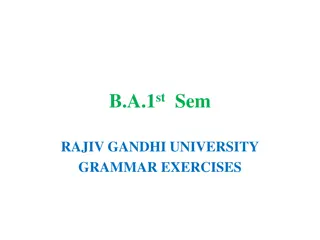GRAMMAR REVIEW
Differences between plurals and possessives, learn how to correct dangling modifiers, fix sentence fragments, and avoid run-on sentences in this comprehensive grammar review. Enhance your writing skills by mastering these key concepts.
Download Presentation

Please find below an Image/Link to download the presentation.
The content on the website is provided AS IS for your information and personal use only. It may not be sold, licensed, or shared on other websites without obtaining consent from the author.If you encounter any issues during the download, it is possible that the publisher has removed the file from their server.
You are allowed to download the files provided on this website for personal or commercial use, subject to the condition that they are used lawfully. All files are the property of their respective owners.
The content on the website is provided AS IS for your information and personal use only. It may not be sold, licensed, or shared on other websites without obtaining consent from the author.
E N D
Presentation Transcript
GRAMMAR REVIEW Plurals vs possessives Modifiers Fragments vs. Run Ons
PLURAL: indicates more than 1 of something The seniors are about to graduate. The juniors want to drive next year. POSSESIVE: indicates ownership The seniors graduation date is June 15. (many seniors own that date) The junior s parking permit will be awarded. (one junior owns a permit) The juniors fee for a parking spot is high. (many juniors have a fee).
DANGLING/MISPLACED MODIFIERS: Make sure the descriptive phrase describes what it is supposed to describe. INCORRECT: Jeff bought an old Jeep from a crooked dealer with a faulty transmission. CORRECT: Jeff bought an old Jeep with a faulty transmission from a crooked dealer. INCORRECT: Dancing at the prom, my shoe became untied. CORRECT: Dancing at the prom, I noticed that my shoe became untied.
FRAGMENTS A fragment is an incomplete thought; it may be missing a subject or a verb and so does not count as a full sentence. Fragment: I checked my phone seven times already today. Starting as soon as I woke up. Fragment: When the weekend arrives, I have so much to do. Like doing laundry, cleaning my room, and finishing my science project.
How do you fix a fragment? OPTIONS 1.Check to see if the clause is missing a subject; if so, add one. 2.Check to see if the clause is missing a verb; if so, add one. 3.Can you just combine the fragment with an existing sentence? That may be as simple as adding a comma, or it may require you to re- write the pair of clauses for a fluent, concise, full sentence.
Fixing a Fragment Fragment: I checked my phone seven times already today. Starting as soon as I woke up. As soon as I woke up this morning, I checked my phone, which I ve now done seven times. Fragment: When the weekend arrives, I have so much to do. Like doing laundry, cleaning my room, and finishing my science project. I have so much to do this weekend, like laundry, cleaning, and studying. Doing laundry, cleaning my room, and finishing my science project are the many things I have to do this weekend.
Run-Ons Run-ons jam two or more full sentences together into one. Just a comma between two full sentences doesn t fix the error. R/O=Current insurance practices are unfair they discriminate against the people who need coverage the most. R/O=The book review s main critiques are harsh, they fail to recognize the stylistic merit of the writing.
How do you fix a run-on? Separate the two sentences with a period. Use a semi-colon (if the sentences are related in content). Add a comma + a coordinating conjunction after the first sentence. Note: Coordinating conjunctions include and, but, for, or, yet, nor, so
Fixing a Run-On R/O=Current insurance practices are unfair they discriminate against the people who need coverage the most. Current insurance practices are unfair; they discriminate against people who need coverage the most. Because they discriminate against the people who need coverage the most, current insurance practices are unfair. Current insurance practices are unfair, for they discriminate against the people who need coverage the most. R/O=The book review s main critiques are harsh, they fail to recognize the stylistic merit of the writing. The book review s main critiques are harsh; they fail to recognize the stylistic merit of the writing. The book review s main critiques are harsh, for they fail to recognize the stylistic merit of the writing.
